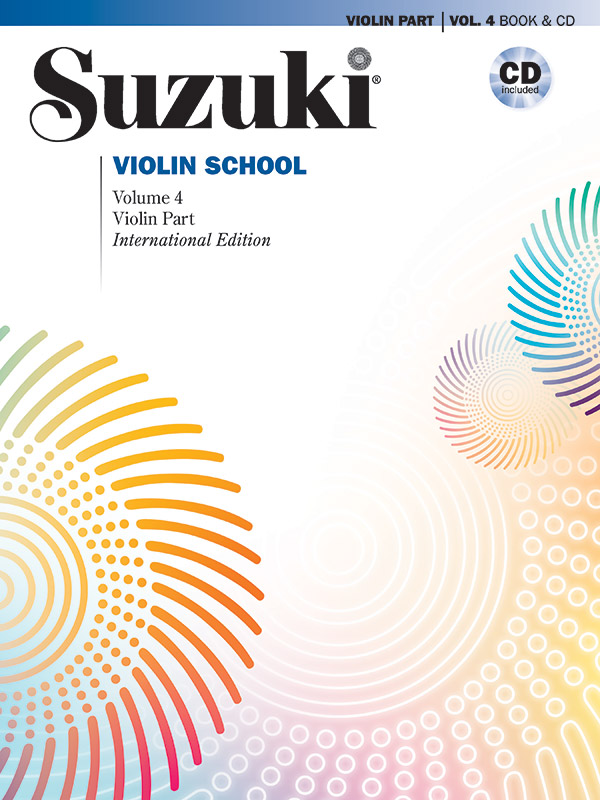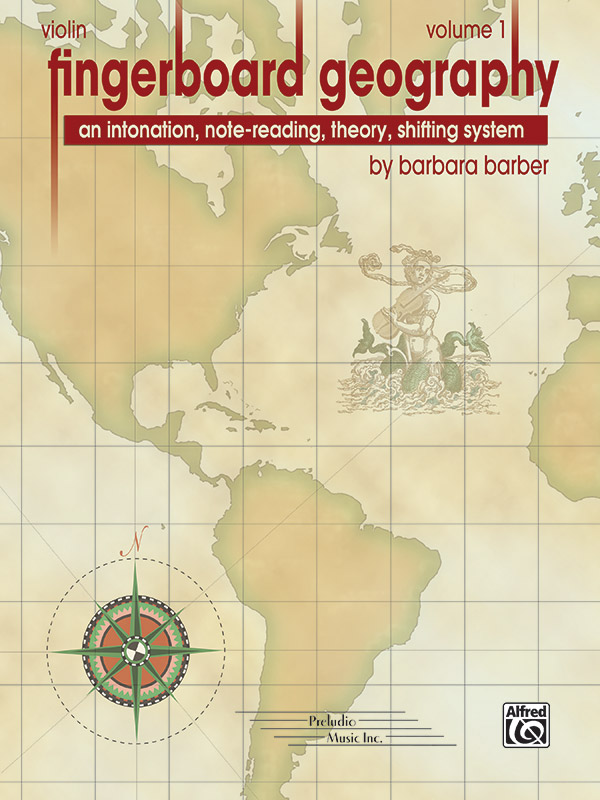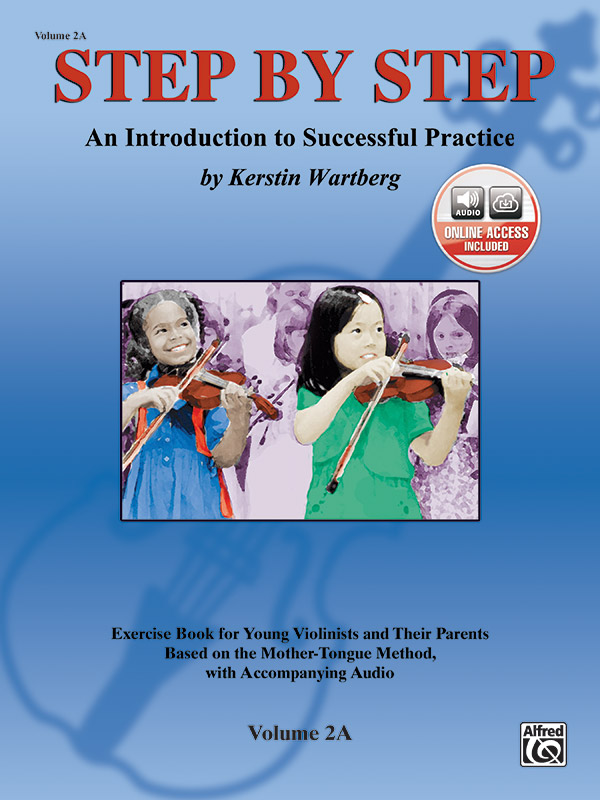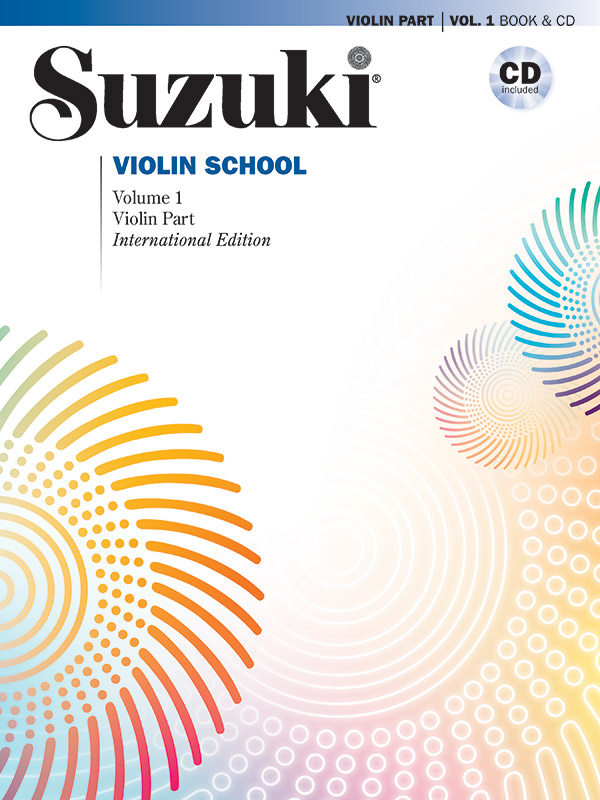-

Suzuki Violin School, Volume 4
By Shinichi Suzuki / violin performed by William Preucil
£18.9500-30725
Teach violin with the popular Suzuki Violin School. The Suzuki Method® of Talent Education is based on Shinichi Suzuki's view that every child is born with ability, and that people are the product of their environment. According to Shinichi Suzuki, a world-renowned violinist and teacher, the greatest joy an adult can know comes from developing a child's potential so he/she can express all that is harmonious and best in human beings. Students are taught using the "mother-tongue" approach. Each series of books for a particular instrument in the Suzuki Method is considered a Suzuki music school, such as the Suzuki Violin School. Suzuki lessons are generally given in a private studio setting with additional group lessons. The student listens to the recordings and works with their Suzuki violin teacher to develop their potential as a musician and as a person. This Suzuki Book & CD is integral for Suzuki violin lessons. This revised edition of the Suzuki Violin School, Volume 4 features: * Revised editing of pieces, including bowings and fingerings * Additional exercises, some from Shinichi Suzuki, plus additional insight and suggestions for teachers * Text in English, French, German, and Spanish * Musical notation guide * Fingerboard position. This CD of the Suzuki violin method, Volume 4 features recordings by William Preucil, and piano accompaniments by Linda Perry, as well as piano accompaniments recorded alone. Titles: Lullaby (Tonalization) (Schubert) * Lullaby (Tonalization) (Brahms) * Concerto No. 2 in G Major, Op. 13, 3rd Movement (Seitz) * Concerto No. 5 in D Major, Op. 22, 1st Movement (Seitz) * Concerto No. 5 in D Major, Op. 22, 3rd Movement (Seitz) * Concerto in A Minor, 1st Movement, Op. 3, No. 6 (Vivaldi/Nachez) * Concerto in A Minor, 3rd Movement, Op. 3, No. 6 (Vivaldi/Nachez) * Perpetual Motion, "Little Suite No. 6" (Bohm) * Concerto for Two Violins in D Minor, BWV 1043, 1st Movement, Violin II (Bach). For a complete list of the most recent printings by AMPV number, go to alfred.com/suzuki. This title is available in SmartMusic. The International editions include an updated title page that designates the book as the International Edition. Learn More -

Step by Step 2B: An Introduction to Successful Practice for Violin
Arr. Kerstin Wartberg
£16.5000-25869
The Step by Step series is a collection of exercise books/audio for violin based on the Mother-Tongue approach. From the very beginning, it will provide a solid foundation in instrumental technique for Suzuki and traditional approaches in private lessons or group settings. The focus is on teaching correct, child-appropriate practice habits that range from listening, singing, and dancing to playing music. The ideas presented, including information for parent and practice tips should stimulate daily practice and also make it more effective. Includes new piano arrangements by David Andruss. This volume is the Complete Version based on Suzuki Violin School, Volume 2, and includes the Violin Exercise Book in English with the recording. Pages: 66 Learn More -

Fingerboard Geography for Violin, Volume 1
By Barbara Barber
£20.9500-29121
String pedagogue Barbara Barber has developed an intonation system which teaches string players the layout of the fingerboard and takes the guesswork out of playing in tune. In Violin Fingerboard Geography, Volume 1, "Finger Marches" establish the 1st finger "home base" note on all four strings. Finger Pattern Exercises -- 12 color-coded patterns -- develop quick, precise action in the left hand without the need for fingerboard tapes. Fingerboard Geography Exercises teach note names, distances, and intervals for all the notes in 1st position. No Fear Shifting has students sailing effortlessly all the way to 8th position on their first day of shifting. Violin Fingerboard Geography, Volume 1, concludes with dozens of Practice Suggestions for pieces in the Suzuki® Violin School, Volumes 1-4, but can be used as a daily warm-up routine and complements perfectly any beginning violin method. The book includes 4 pull-out color-coded Finger Pattern charts. Learn More -

Step by Step 2A: An Introduction to Successful Practice for Violin
Arr. Kerstin Wartberg
£16.5000-25601
The Step by Step series is a collection of exercise books/recordings for violin based on the Mother-Tongue approach. From the very beginning, it will provide a solid foundation in instrumental technique for Suzuki and traditional approaches in private lessons or group settings. The focus is on teaching correct, child-appropriate practice habits that range from listening, singing, and dancing to playing music. The ideas presented, including information for parent and practice tips should stimulate daily practice and also make it more effective. Includes new piano arrangements by David Andruss. This volume is the Complete Version based on Suzuki Violin School, Volume 2, and includes the Violin Exercise Book in English with the recording. Pages: 60 Learn More -

-

-

Suzuki Violin School, Volume 10
By Shinichi Suzuki
£14.9500-0226
Teach violin with the popular Suzuki Violin School. The Suzuki Method® of Talent Education is based on Shinichi Suzuki's view that every child is born with ability, and that people are the product of their environment. According to Shinichi Suzuki, a world-renowned violinist and teacher, the greatest joy an adult can know comes from developing a child's potential so he/she can express all that is harmonious and best in human beings. Students are taught using the "mother-tongue" approach. Each series of books for a particular instrument in the Suzuki Method is considered a Suzuki music school, such as the Suzuki Violin School. Suzuki lessons are generally given in a private studio setting with additional group lessons. The Volume 10 student listens to the recordings and works with their Suzuki violin teacher to develop their potential as a musician and as a person. This suzuki book is integral for teaching Suzuki Violin lessons. Volume 10 Titles: Concerto in D Major, K. 218 (Allegro, Andante cantabile, Rondeau) (Mozart) (Joachim/arr. Suzuki) * Points of Practice. For a complete list of the most recent printings by AMPV number, go to alfred.com/suzuki. This title is available in MakeMusic Cloud. Learn More -

My First Note-Reading Book
By Kerstin Wartberg
£9.9500-25895
My First Note-Reading Book with its companion CD can be used parallel to the Step by Step lesson books or with any other violin method. It leads young violinists, step by step in a playful manner, through the basics of reading music and sight-reading. Lessons include: * Speech, clapping and motion games * Drawing games, writing games, brain teasers * Note-reading exercises with and without the instrument * Training in sight-reading. Learn More -

Suzuki Violin School, Volume 1
By Shinichi Suzuki / violin perf. Hilary Hahn / accomp. perf. Natalie Zhu
£16.9500-48722
Teach violin with the popular Suzuki Violin School! The Suzuki Method® of Talent Education is based on Shinichi Suzuki's view that every child is born with ability, and that people are the product of their environment. According to Shinichi Suzuki, a world-renowned violinist and teacher, the greatest joy an adult can know comes from developing a child's potential so he/she can express all that is harmonious and best in human beings. Students are taught using the "mother-tongue" approach. Each series of books for a particular instrument in the Suzuki Method is considered a Suzuki music school, such as the Suzuki Violin School. Suzuki lessons are generally given in a private studio setting with additional group lessons. The student listens to the recordings and works with their Suzuki violin teacher to develop their potential as a musician and as a person. This Suzuki Book & CD is integral for Suzuki violin lessons. This International Edition of the Suzuki Violin School, Volume 1 features: * Engravings in a 9" x 12" format * New editing of pieces, including bowings and fingerings * 16 additional pages * Additional exercises, some from Shinichi Suzuki, plus additional insight and suggestions for teachers * Glossary of terms in English, French, German, and Spanish * Musical notation guide * Fingerboard position * CD features new recordings by Hilary Hahn in collaboration with pianist Natalie Zhu, as well as piano accompaniment only tracks for play-along purposes. Titles: Principles of Study and Guidance * Twinkle, Twinkle, Little Star Variations (Suzuki) * Lightly Row (Folk Song) * Song of the Wind (Folk Song) * Go Tell Aunt Rhody (Folk Song) * O Come, Little Children (Folk Song) * May Song (Folk Song) * Long, Long Ago (Bayly) * Allegro (Suzuki) * Perpetual Motion (Suzuki) * Allegretto (Suzuki) * Andantino (Suzuki) * Etude (Suzuki) * Minuet 1, Minuett III from Suite in G Minor for Klavier, BWV 822 (Bach) * Minuet 2, Minuet, BWV Anh. II 116 from Notebook for Anna Magdalena Bach (Bach) * Minuet 3, Minuet BWV Anh. II 114 / Anh. III 183 (Bach) * The Happy Farmer from Album for the Young, Op. 68, No. 10 (Schumann) * Gavotte (Gossec). This title is available in MakeMusic Cloud. Learn More -

Note Reading for Violin
By Dr. Shinichi Suzuki
£17.9500-0213S
This book will make the Suzuki parent's task much easier as it will provide a reference when a parent does not know how to teach new pieces. The teacher's job will be easier too because it will no longer be necessary to explain to the parent the relationship between notes and violin fingerings. This book is well illustrated so that parents and advanced children can easily understand by reading and looking at the pictures. Dr. Suzuki explains, step-by-step from open strings to placing fingers, what happens to the fingers when there are sharps, flats, and naturals on the page. He explains rhythms and how to read the higher positions. When the child is young, a parent can point to the illustrations and explain easily. There are many nice pieces for reading practice towards the end of the book. Learn More





